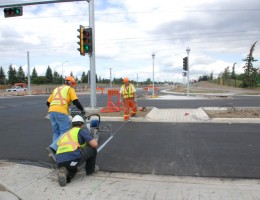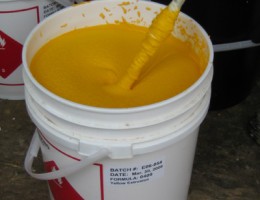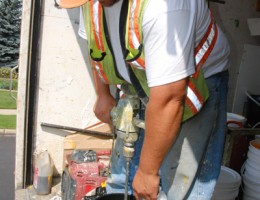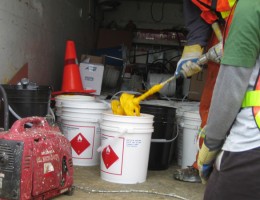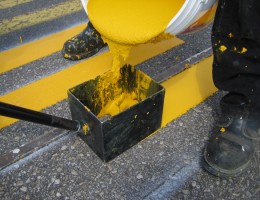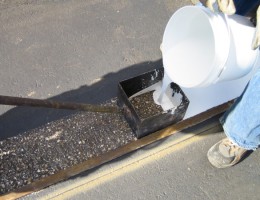Surface Road Markings
Surface-applied plastic provides medium durability, and is excellent for use on medium ADT roadways, edge lines and highway message markings.
While the application process is very precise and requires extreme attention to detail, the cost is less than inlaid applications. The results are a smooth, durable and long-lasting marking.
BENEFITS OF SURFACE-APPLIED MARKINGS
- More durable than paint road markings
- Lower initial cost, and faster to apply than inlaid road markings
- Very versatile: can be applied in most shapes that can be stencilled
- Great for transverse and longitudinal markings
- High retro-reflectivity
- System 400 Cold Plastic can be applied in temperatures as low as 0°C
- Lafrentz thermoplastics and cold plastics are ISO:9001 certified
If you’re painting two times per year or more, surface-applied plastic markings are a more cost-effective choice, providing better durability and longevity. Most cost- effective in small- to medium-sized urban centres, these markings have a proven track record of durability and performance.
Surface-applied markings can be applied using one of two plastic materials, both of which are manufactured by Lafrentz Road Marking for Canada’s harsh climates:
SYSTEM 400 COLD PLASTIC
An eco-friendly product, cold plastic can be applied at lower temperatures than thermoplastic (as low as 0°C), and it uses a chemical catalyst, not a heat process, to create a bond to the aggregate in the road surface. System 400 is very flexible, economical, and can be applied to new and aged asphalt as well as concrete. It is made of methyl methacrylate (MMA), a hard resin compound that is completely U.V. stable and has no VOC emissions. System 400 can also be overlaid on a previous System 400 application to provide monolithic repairs.
SYSTEM 300 THERMOPLASTIC
Thermoplastic uses a heat process to create a hydrocarbon bond to the road surface. Lafrentz heats solid plastic blocks to high temperatures, and applies the liquid plastic to either longitudinal or transverse markings. Lafrentz has years of experience working with thermoplastic, and has been applying it to roadways since 1974.


